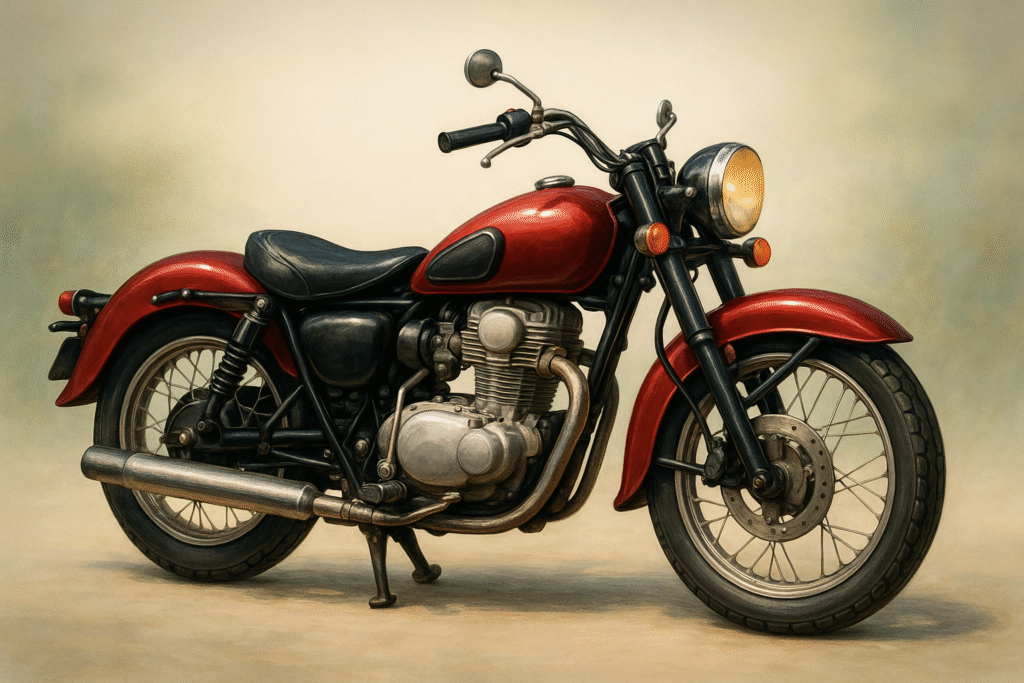The world’s first motorized bike hit the pavement over 150 years ago and many of the basic parts of a motorcycle still remain the same. A motorcycle needs an engine, a chassis, a transmission and a set of wheels to operate.
Read on to learn about the different parts of a motorcycle, or jump to our info graphic with explanatory images.
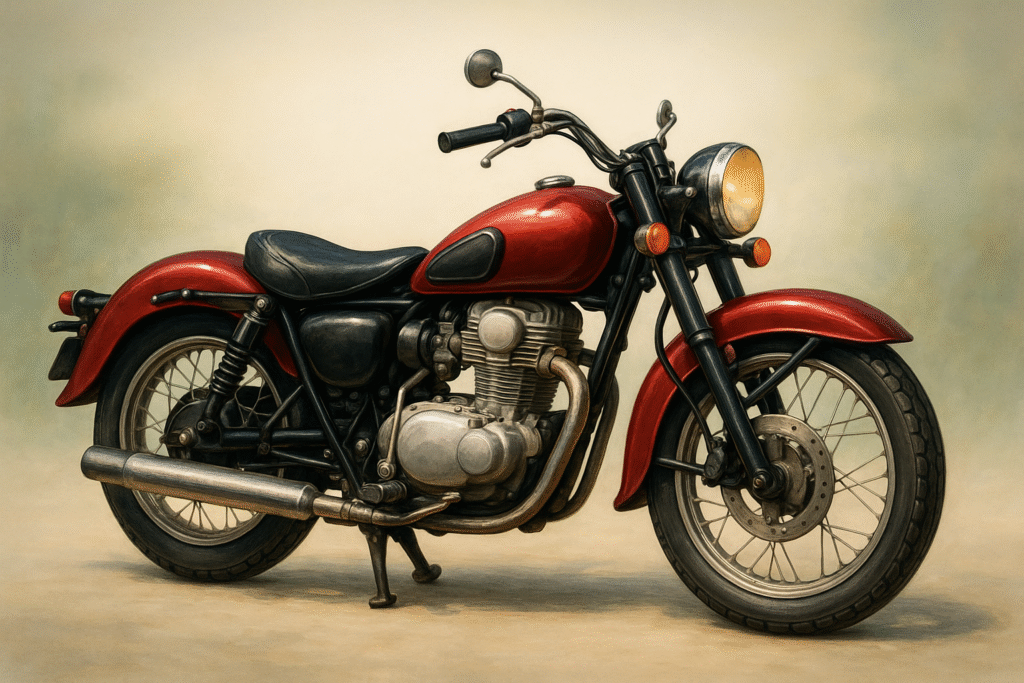
Breakdown of Motorcycle/Bike components:
In fact, motorcycles are complex, finely tuned machines with many mechanical parts.
There are several different kinds of motorcycles, and most of them share the same basic foundational design. Here are the five main categories of motorcycle types:
- Standard bikes: general use motorcycles with upright seating positions
- Cruisers: large bikes with vintage designs and low-slung profiles
- Touring bikes: heavy bikes with large engines and luggage storage
- Sport bikes: lightweight motorcycles that prioritize performance
- Dirt bikes: lightweight motorcycles designed for off-road use
Any motorcycle you ride has an engine, a chassis, a transmission and a set of wheels. By changing the sizes and features of these components, you can customize your motorcycle to produce different performance and riding results.
Below, we break down these basic motorcycle parts and the roles they each play in making your bike function.
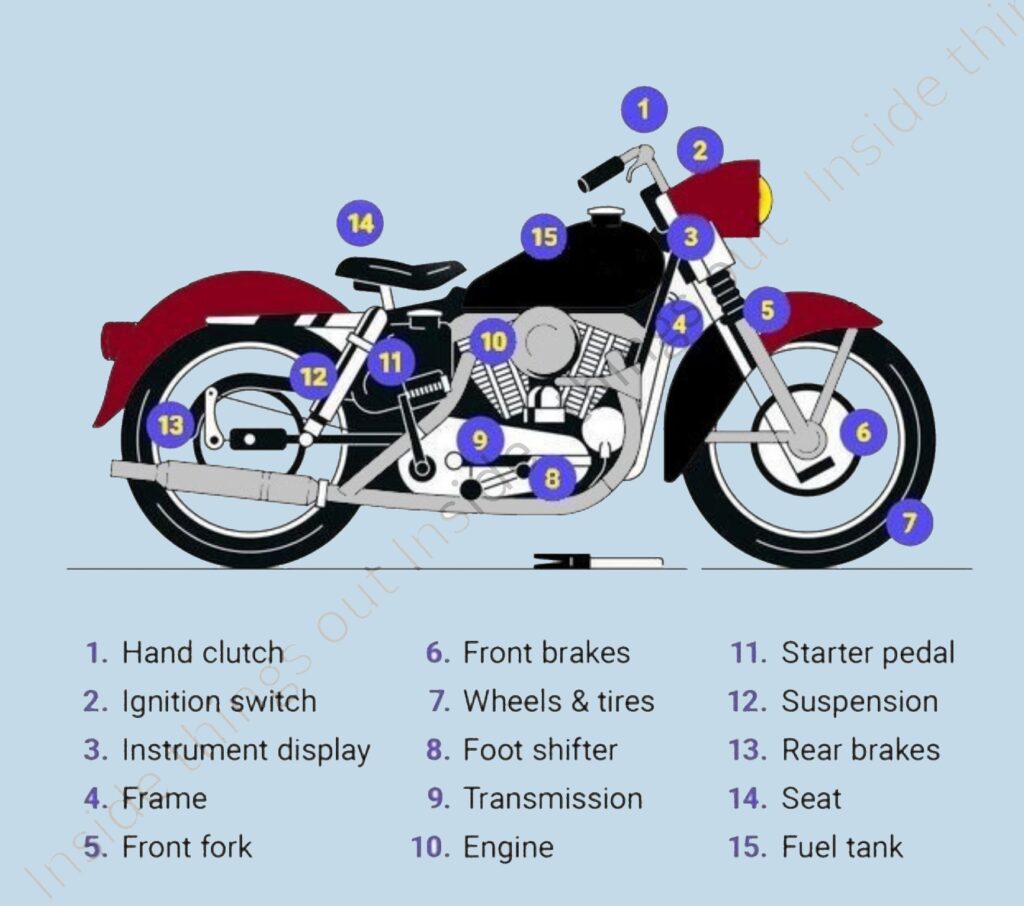
Engine
The beating heart of any motorcycle is its engine, even if the bike is an electric with a motor and battery. A common motorcycle classification is engine size, measured in cubic centimetres (cc). Higher cc engines are heavier and require more power to run.
In non-electric bikes, An engine works by drawing in an air-fuel mixture, compressing it, igniting it to produce power, and expelling exhaust gases. This cycle repeats to drive the bike.
In most cases, the engine mounts directly to the motorcycle’s frame. This keeps the motorcycle’s center of gravity low while keeping the engine far enough away from the wheels and front fork. In non-electric bikes, the fuel tank is mounted over the engine, typically in a central location underneath the seat.
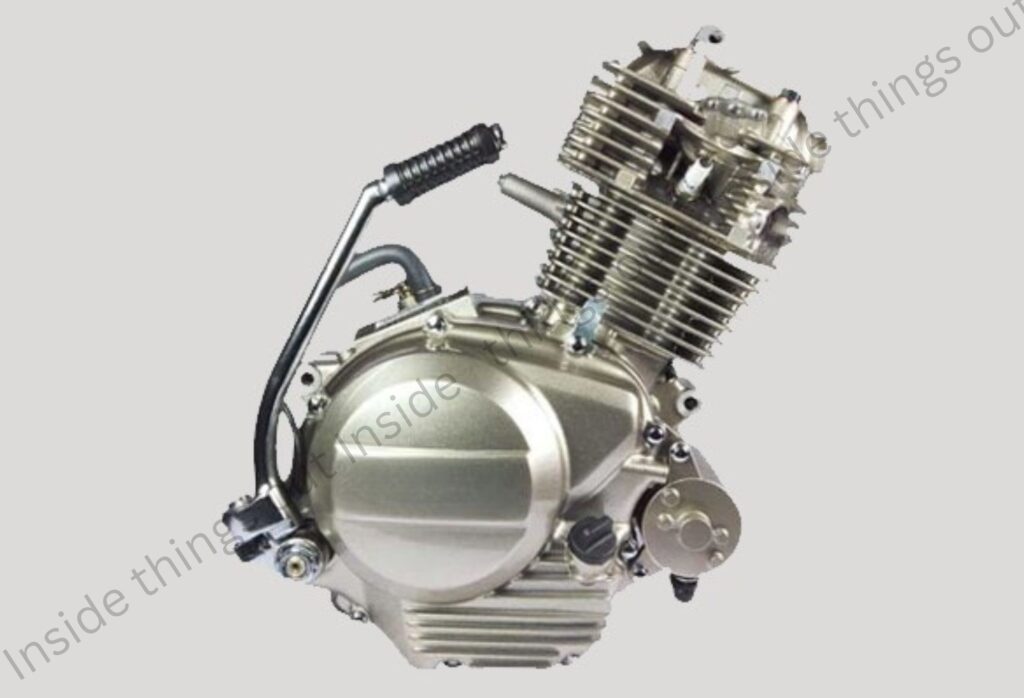
Chassis
The chassis is the skeletal framework of a motorcycle. It serves as the base structure to which all other parts are attached. The main components of the chassis include the frame, the front fork, and the suspension. Together, these parts provide the essential support and stability needed for the motorcycle to function properly.
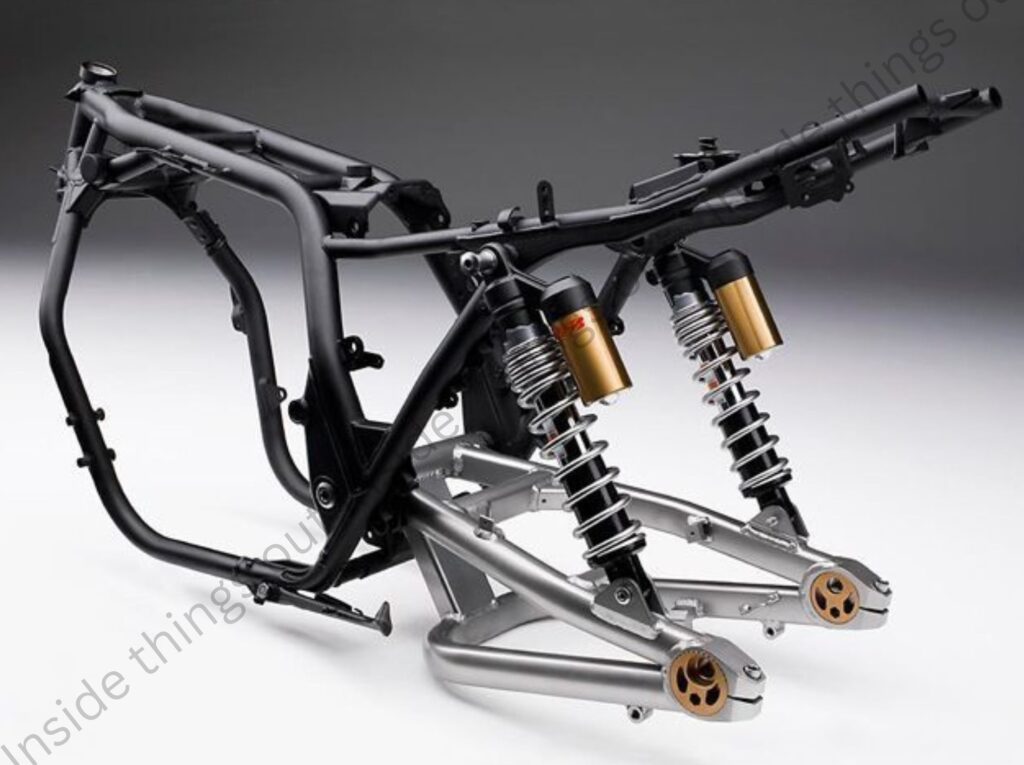
Front fork
Your motorcycle’s steering and handling are made possible by the front fork. The handlebars connect to fork tubes on either side of the front wheel that house hydraulic springs in the suspension; this tube connects to legs (called sliders) that attach to the front axle and control movement of the wheel.
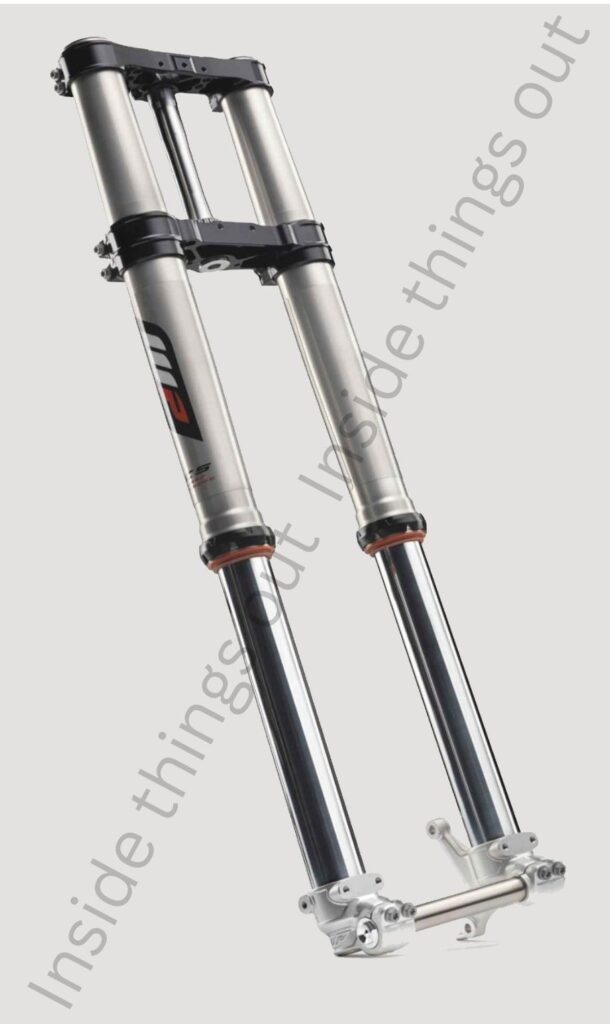
Suspension
Keeping your motorcycle grounded and your ride smooth is the job of the suspension. Both front and rear suspension setups are common. In the front, hydraulic shocks connect to the fork and cushion impacts under the wheel. In the rear, a suspension connects the body to the axle.
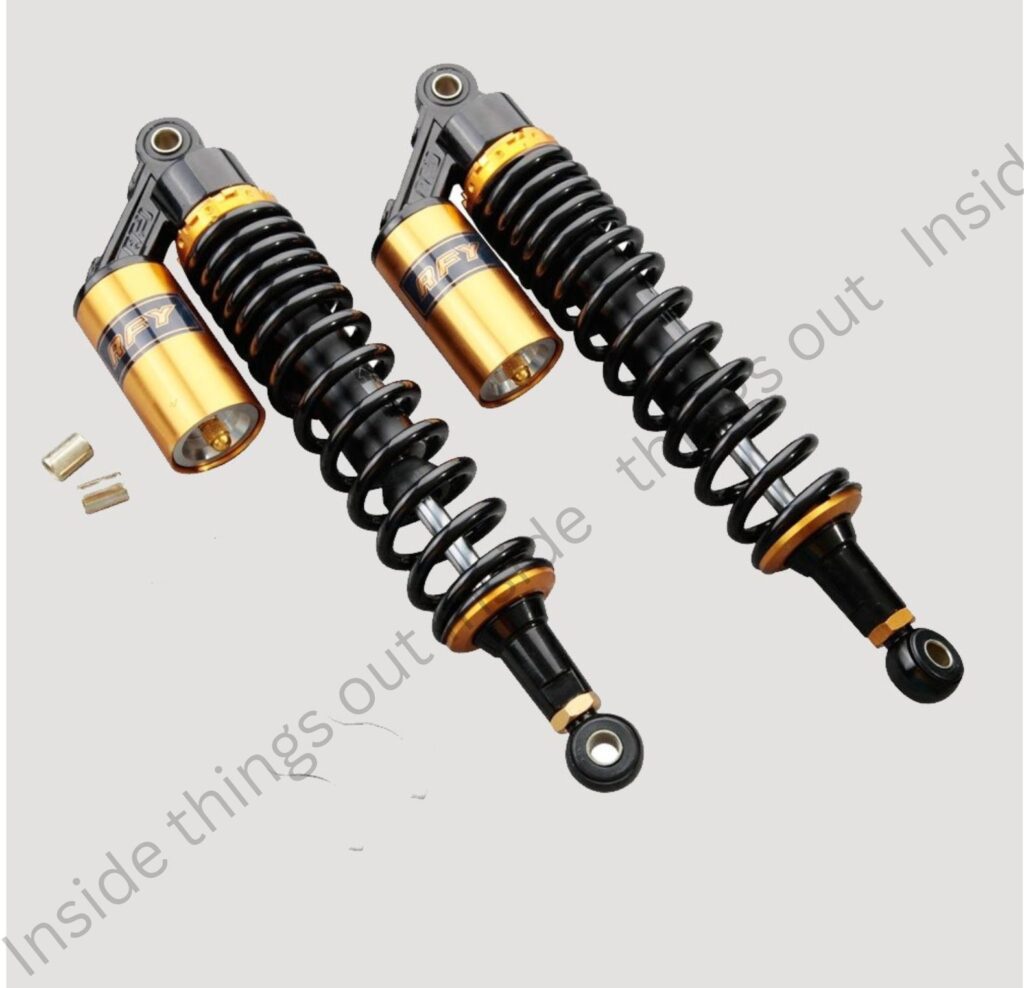
Transmission
For power to flow from the engine through the drive train, a transmission is needed. The transmission is activated via the hand clutch when shifting gears, propelling the bike forward with torque produced by the engine. The most common motorcycle transmission setup is a sequential manual shifter that works with a foot pedal shifter. “Sequential manual” shifting means the rider manually shifts gears either up or down to the next sequential gear.
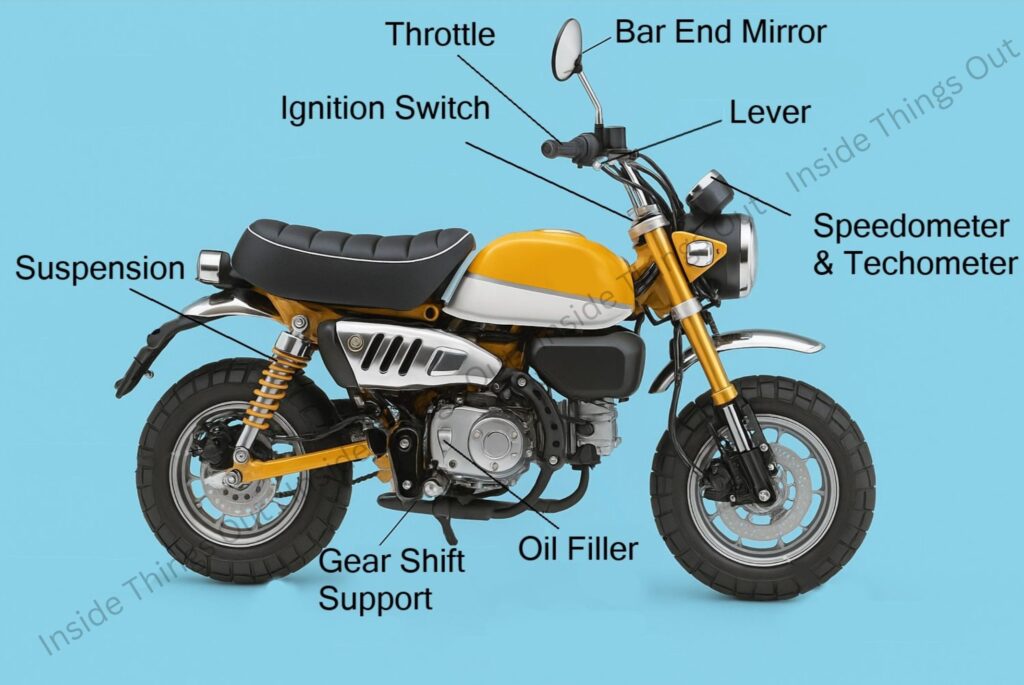
Other parts of the transmission that help your bike get going and stay moving include:
- Ignition switch: a handlebar-mounted, key-operated switch that controls the flow of power to the rest of the motorcycle
- Starter pedal: once the ignition switch is activated and power is released through the bike, this pedal allows the rider to start the bike
- Foot shifter: allows the rider to shift gears up or down with a foot control that’s located near the footrests
- Hand clutch: handlebar-located control that disconnects the clutch from the engine, allowing the rider to safely proceed with a gear shift,
Wheels
The wheels and tires on your motorcycle play a crucial role in its overall performance and capabilities. Tire ratings vary depending on their intended use—whether for street riding, high-speed performance, off-road adventures, or other specific conditions. These ratings also take into account the motorcycle’s weight and the type of surface it will travel on, such as loose dirt, city streets, or racetracks.
In addition to supporting the tires, the wheels serve as the mounting points for the front and rear brakes. The front brakes are larger than the rear brakes because they need to provide more stopping power to slow down the motorcycle quickly. Both the front and rear brakes are operated via levers located on the handlebars.
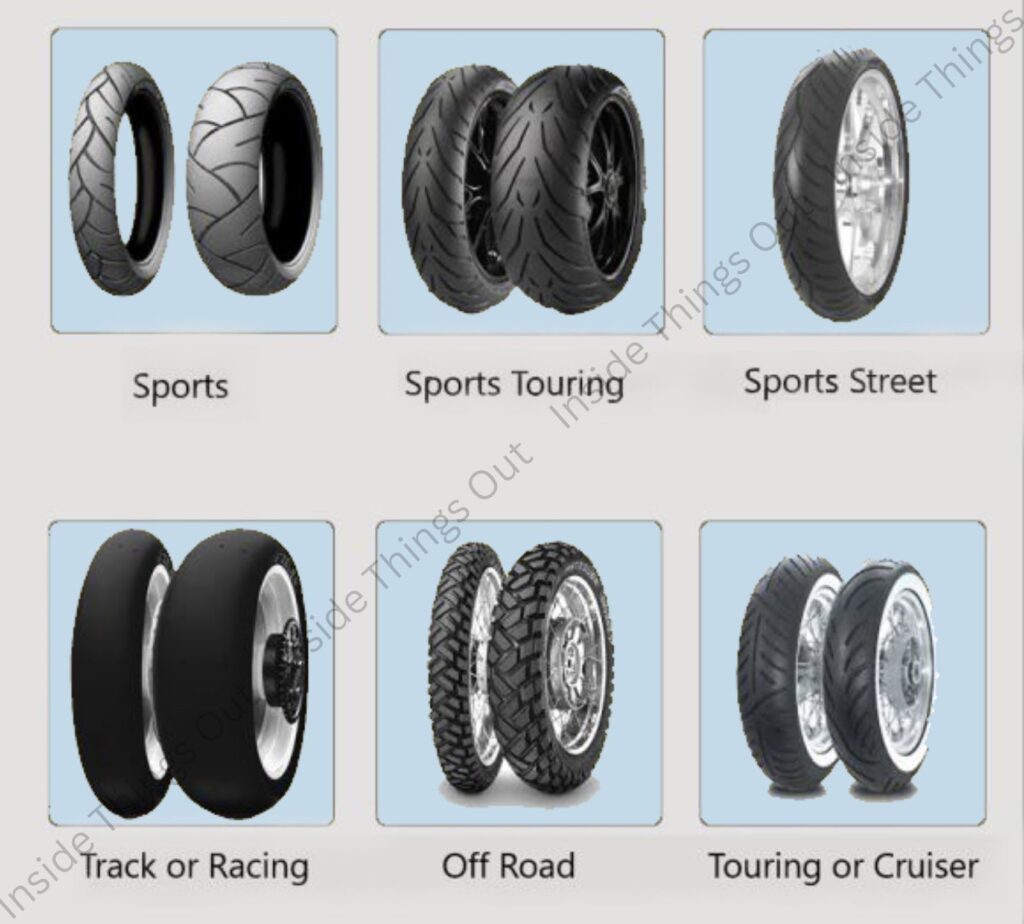
Instrument display
The instrument display is the motorcycle’s central computer system. It shows your current speed and fuel level. It also monitors electronic add-ons like GPS devices and engine temperature sensors. The display collects data from various sensors to keep you informed while riding. This helps you stay aware of your bike’s performance and status.
Tachometer, Speedometer & Odometer are the instruments used in vehicles display, but they measure different parameters:
1) Tachometer
◆ Purpose: Measures the engine’s rotational speed (RPM – revolutions per minute).
◆ Use: Helps drivers monitor engine speed to avoid over-revving and potential engine damage.
◆ Common in: Cars, motorcycles, airplanes, and other machinery with rotating parts.
2) Speedometer
◆ Purpose: Measures the vehicle’s speed (usually in km/h or mph).
◆ Use: Helps drivers comply with speed limits and maintain safe speeds.
◆ Common in: All motor vehicles, bicycles and boats.
3) Odometer
An odometer is an instrument used to measure the total distance travelled by a vehicle. It is typically displayed on the vehicle’s dashboard and is an essential component for tracking mileage.
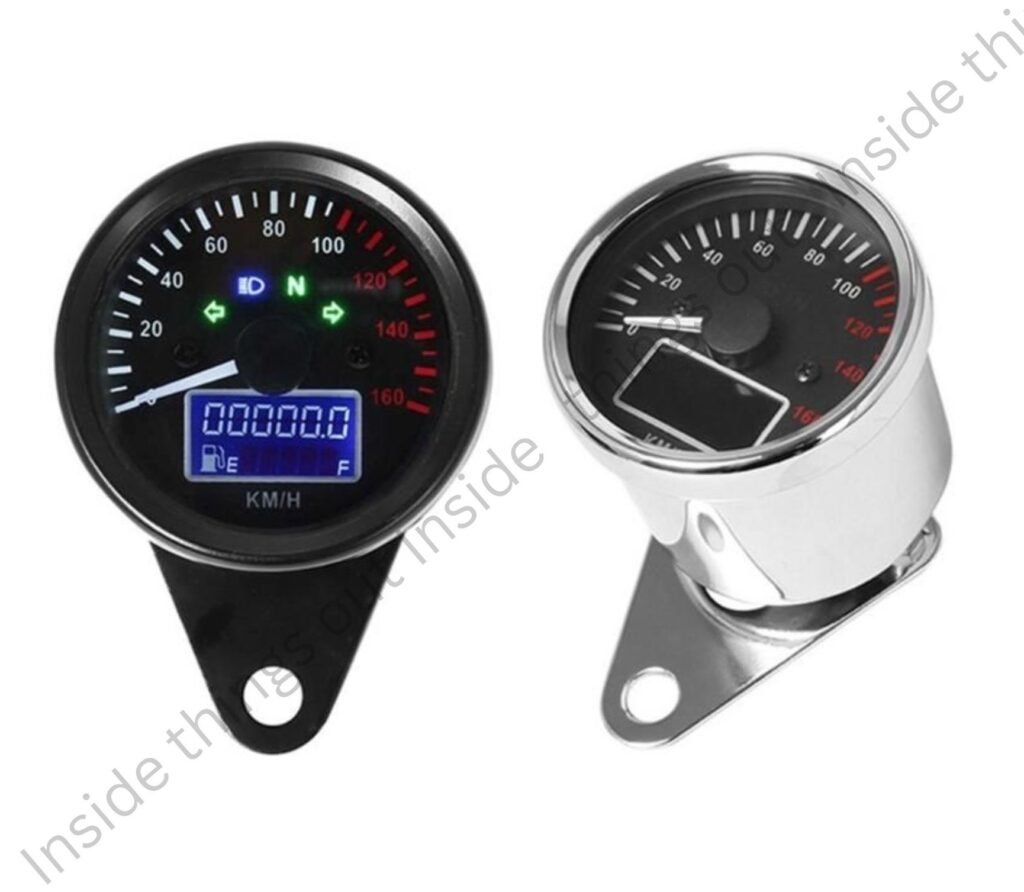
Even though motorcycles have come a long way since the first motorized bike rolled out over 150 years ago, the core parts that keep them running are still pretty much the same. Each piece — from the engine to the wheels — works together to create that thrilling ride we all love. Understanding these key parts not only deepens appreciation for motorcycle engineering but also helps riders maintain and enjoy their bikes safely and effectively.
*****

